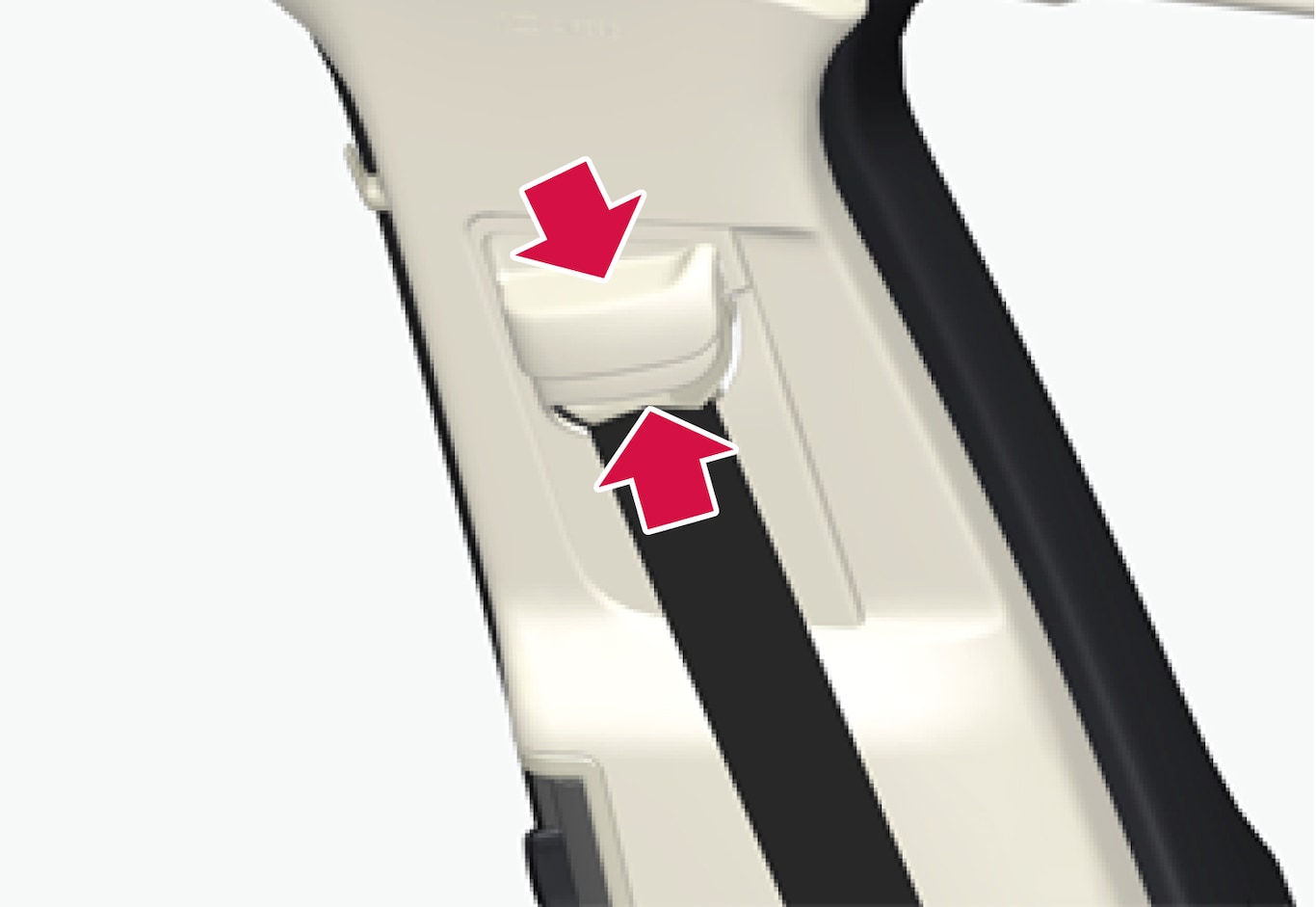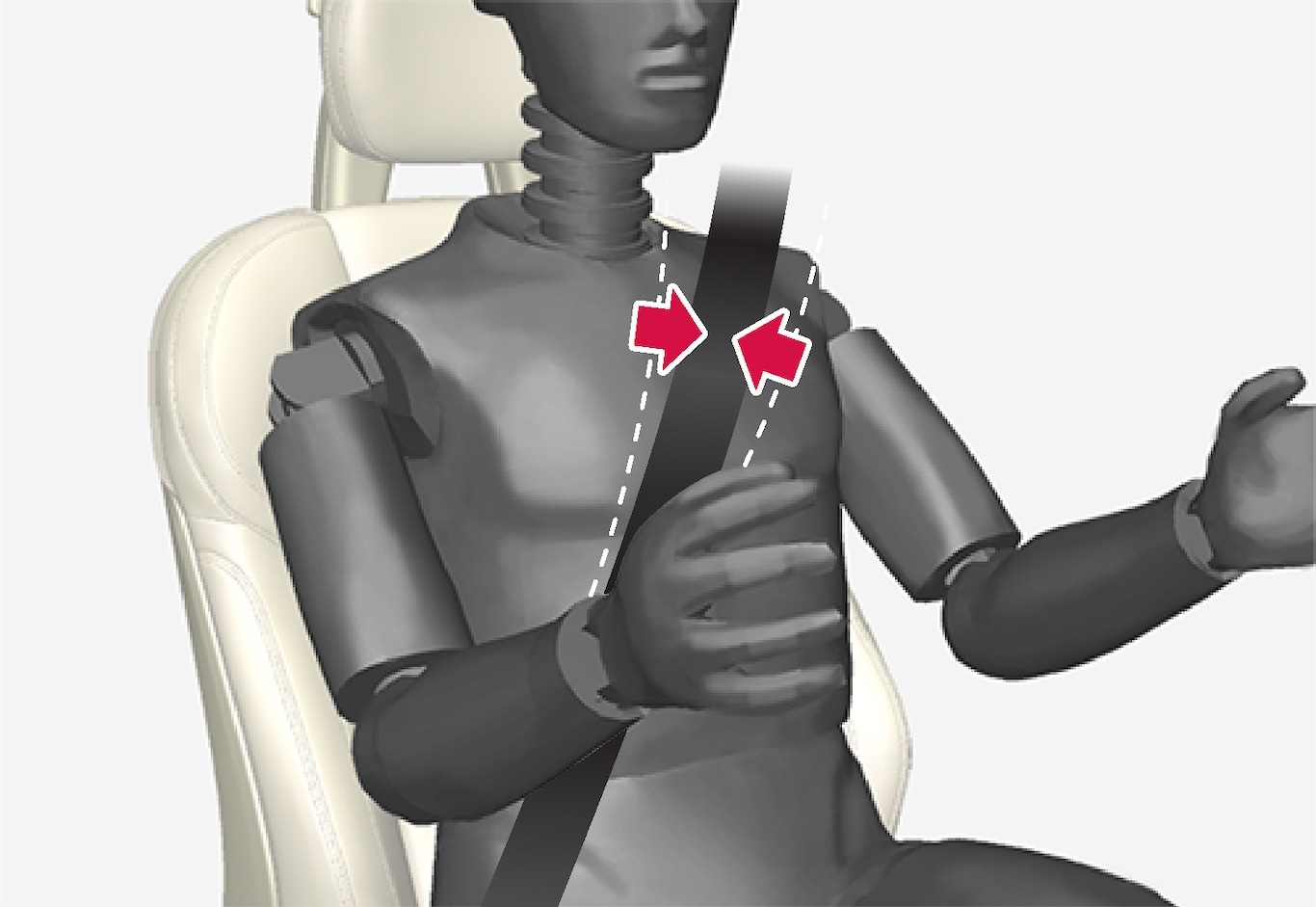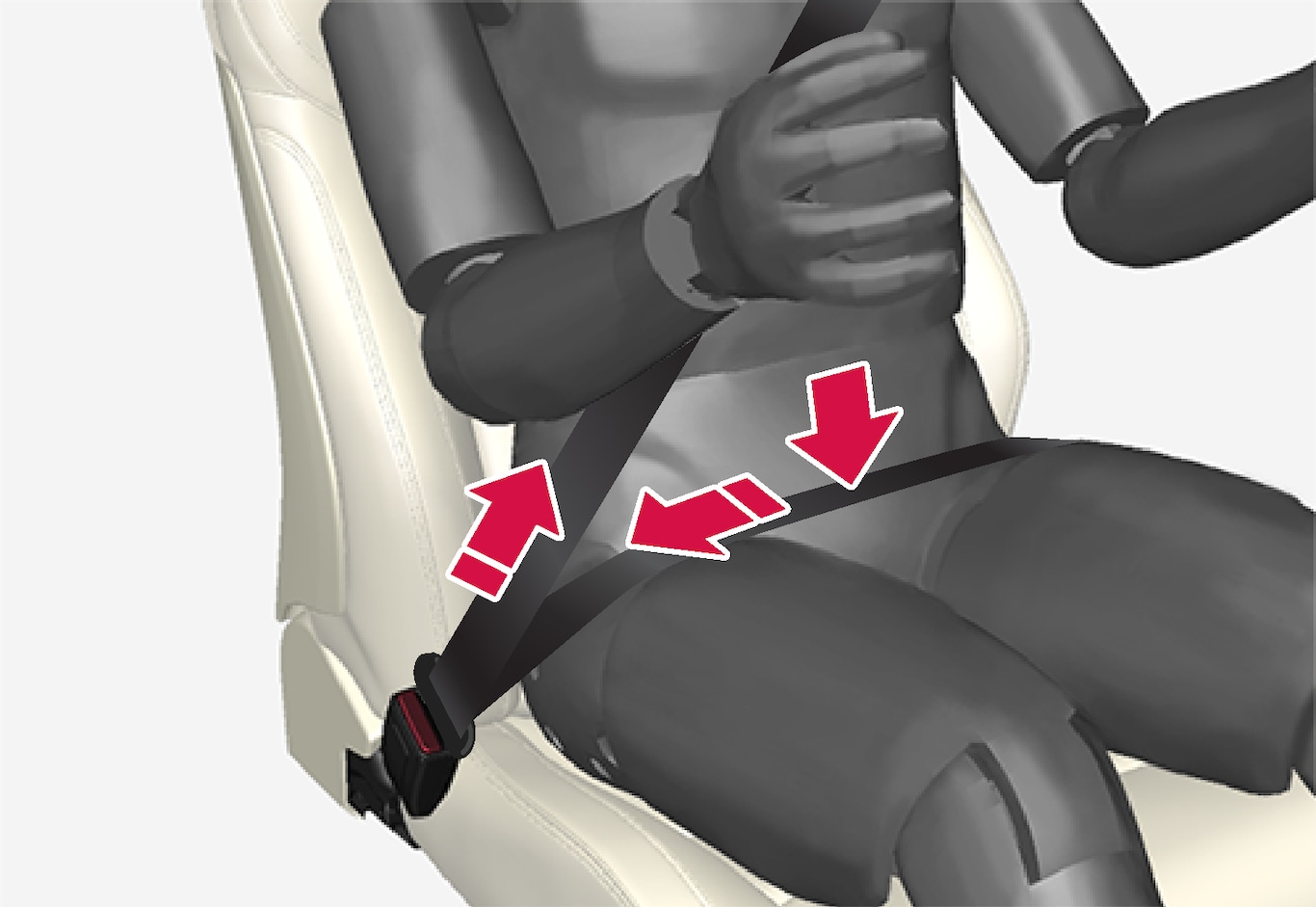Buckling seat belts
Pull out the belt slowly and make sure it is not twisted or damaged.
If the seat belt in the second row center seating position is used, make sure it is properly positioned in the correct seat belt guide.
Note
Each seat belt is equipped with a retractor that will lock up in the following situations:
- if the belt is pulled out rapidly
- during braking and acceleration
- if the vehicle is leaning excessively
- when driving in turns
- if the automatic locking retractor/emergency locking retractor (ALR/ELR) is activated. Each seat belt (except for the driver's) is equipped with an ALR function, which is designed to keep the seat belt taut when installing a child restraint. ALR is activated when the seat belt is pulled out as far as possible. If this is done, a sound from the seat belt retractor will be audible, which is normal. The seat belt can now only be fed into the retractor, not pulled out. This function is automatically disabled when the seat belt is unbuckled and fully retracted.
Warning
The height of the seat belts in the front seats and outboard rear seating positions can be adjusted.

Press the button on the seat belt holder and move the belt up or down.
Position the belt as high as possible without it chafing against the neck.

Tighten the lap section of the seat belt over the hips by pulling the diagonal section upward toward the shoulder.

Warning
Warning
Warning
Unbuckling seat belts
If it does not fully retract, guide the belt manually into the slot and make sure it does not hang loose.
If the seat belt in the second row center seating position is used, make sure it is properly positioned in the correct seat belt guide.